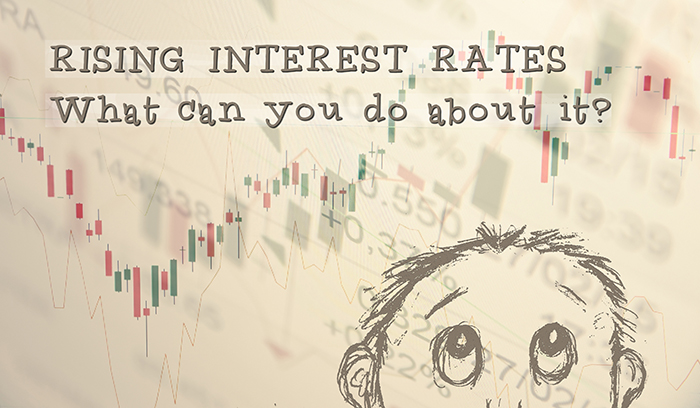
Rising Interest Rates? What’s It to You? Part II

We don’t know when the Fed might begin to increase short-term interest rates. We don’t know by how much, nor how rapidly it might occur. Come what may, you can best protect your own financial interests in the face of rising interest rates by understanding how the Federal Reserve’s actions interplays with the rest of our global capital economy. In our last post, we looked at the connections between short-term rates and your savings and debts. Today, we’ll explore the delicate balance between investors and interest rates.
If you are an investor:
The first thing to know as an investor is this: Even though the Federal Reserve seems poised to raise short-term rates, there are no foregone conclusions on how that might impact market returns moving forward – including long-term interest rates.
Dimensional Fund Advisors published a recent paper, “Considering Central Bank Influence on Yields,” exploring the assumption that there is a direct, cause-and-effect relationship between the Federal Reserve’s policies and long-term interest rates: “[H]istory shows that short- and long-term rates do not move in lockstep. There have been periods when the Fed aggressively lifted the fed funds target rate – the short-term rate controlled by the central bank –while longer-term rates did not change or ‘stubbornly’ declined.”
In his Fortune commentary, “Can your portfolio survive rising interest rates,” finance columnist Josh Brown described the attempt to forecast the impact of rising interest rates on market returns even more succinctly: “We’re almost always comparing apples to kumquats in an exercise like this one.”
Brown’s colleague and fellow “Wealth of Common Sense” blogger Ben Carlson weighs in as well: “Forecasting the direction of interest rates is extremely difficult, mainly because there are so many factors and expectations to consider when making your forecast. But beyond predicting where rates will go in the future, most people don’t even realize how much of an over-generalization ‘interest rates’ really is.”
Rick Ferri’s recent commentary serves as another resource, suggesting three potential silver linings investors may find in higher interest rates. First, at least we will no longer have to wait for that other shoe to drop. Our capital markets hate uncertainty, and Federal Reserve rates have been living in limbo-land for quite a while. Second, retirees and others depending on interest from CDs, bonds and similar fixed income investments can expect to see higher rates there as well (although whether they offset inflation remains to be seen). Third, once the Fed can move beyond its “nowhere to go but up” position, it may gain improved control over our fiscal well-being. “The Fed Gets Its Hammer Back,” suggests Ferri.
The take-home: At the risk of further damaging our oft-played broken record, we continue to advise against devoting too much of your time and energy trying to forecast the degree, the timing and the effect of future rates on market returns. We likewise discourage you from taking to heart the advice of those offering any “sure thing” forecasts for you. As with any other market pricing, various interest rates are influenced by an inscrutable brew of forces yet to occur, including but hardly limited to the Federal Reserve and its activities.
Sage Serendipity:  The new Bond movie Spectre, is being released in the US in a couple days. Quartz.com has collected some articles in License To Fail: James Bond lacks the “emotional intelligence” to get a job as a real-life spy It’s a wake up call to our beloved image of the British spy 007. Ouch! It reports that in the latest recruitment campaign for M16 James Bond wouldn’t make the cut — he’s too fancy, and emotionally remote. Rubbish. We love our international men of mystery. Yeah, Baby!
The new Bond movie Spectre, is being released in the US in a couple days. Quartz.com has collected some articles in License To Fail: James Bond lacks the “emotional intelligence” to get a job as a real-life spy It’s a wake up call to our beloved image of the British spy 007. Ouch! It reports that in the latest recruitment campaign for M16 James Bond wouldn’t make the cut — he’s too fancy, and emotionally remote. Rubbish. We love our international men of mystery. Yeah, Baby!
 Secure Document Sharing
Secure Document Sharing


